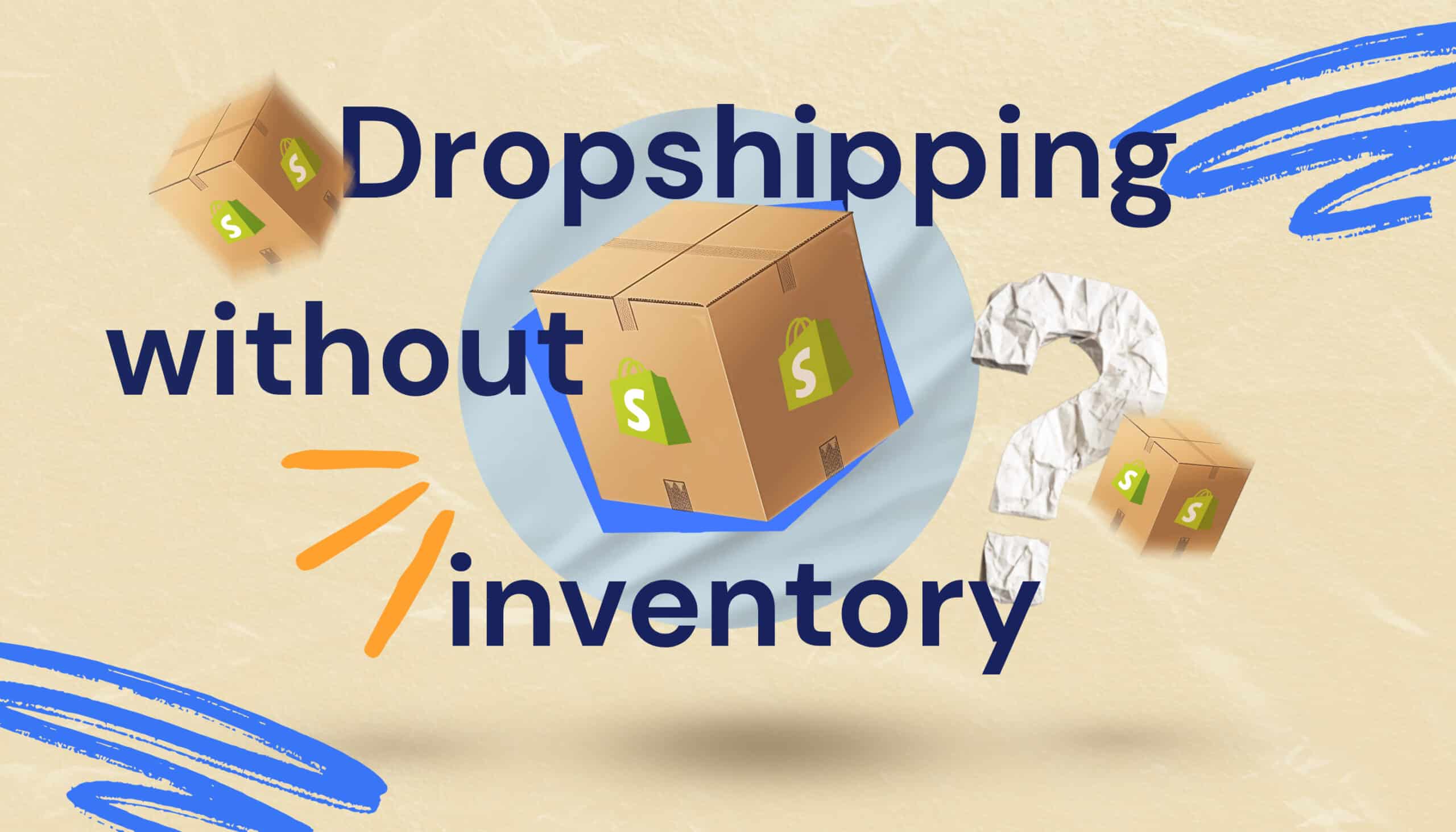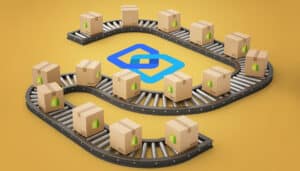If you’re wondering how to sell on Shopify without inventory, dropshipping makes launching an inventory-free ecommerce business surprisingly easy. A customer places an order, your supplier ships it, and you keep the profit margin. But what could go wrong?
Launching a Shopify no-inventory business allows entrepreneurs to scale fast without tying up capital in stock.
Plenty, as it turns out. Around 90% of dropshipping businesses fail in their first year, and it’s usually not because of bad products or weak ads. The real problem is operational chaos. Manual order entry, mismatched inventory, missing refunds, and messy finances tend to creep in just as things start to scale.
Most guides on how to sell on Shopify without inventory focus only on finding “winning products.” However, the true key to selling on Shopify without inventory is building robust systems that can scale with your growth.
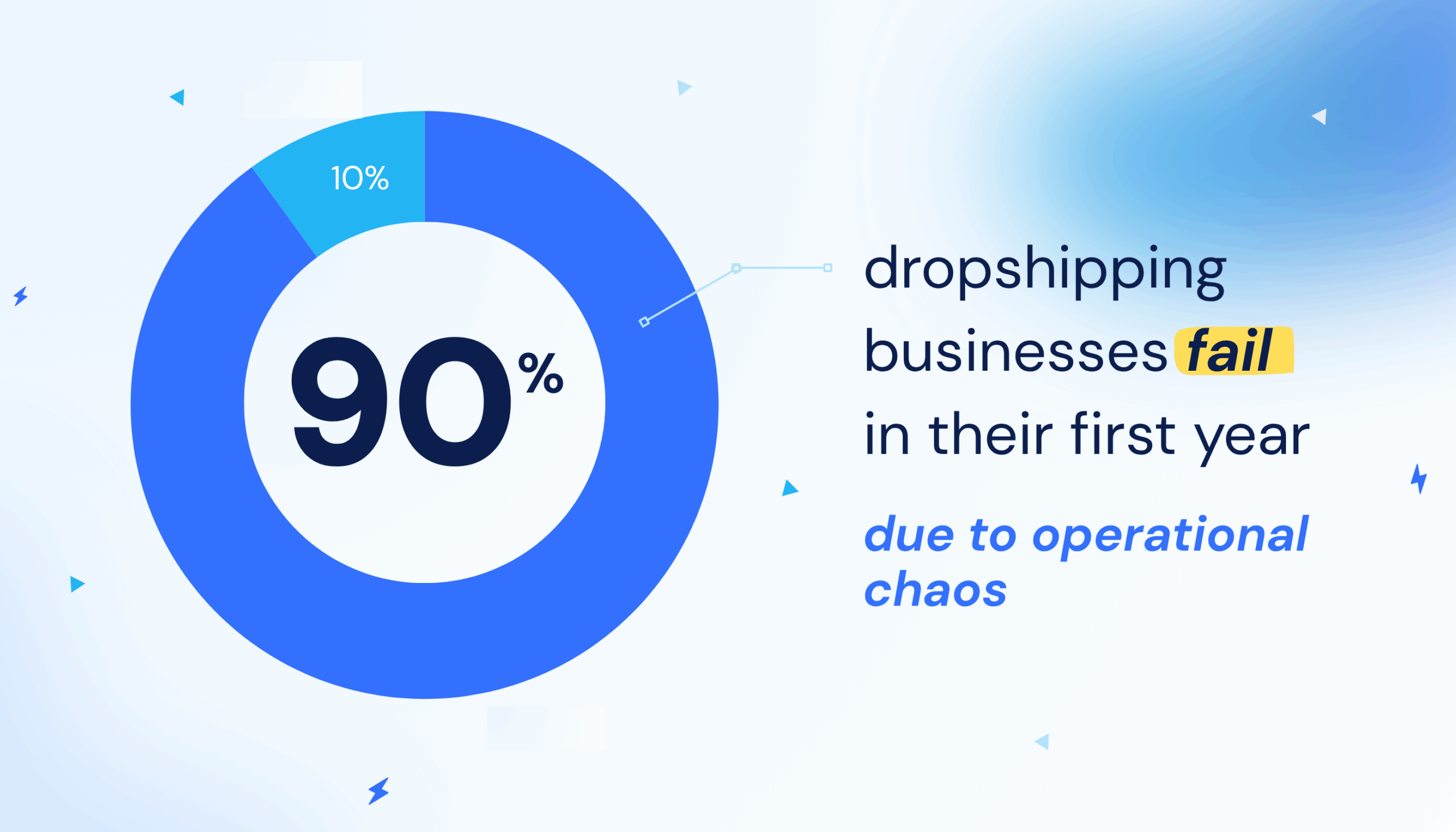
The Real Reason Most Dropshipping Businesses Fail
The dropshipping model removes many traditional barriers to starting an online store. There’s no inventory in your garage, no warehouse lease draining your profits, and no massive upfront investment. This ecommerce without stock approach lets you test market demand with minimal risk.
Shopify makes it even easier, with built-in payment processing, mobile optimization, and supplier integrations that get you selling fast. For many new entrepreneurs, early wins come quickly.
But that early success is often the beginning of the end.
When Success Becomes a Problem
As orders start flowing, everything looks great on the surface. Revenue climbs, your store gains traction, and it seems like you’re on your way.
Behind the scenes, though, the wheels are starting to wobble.
Manual order processing transforms from a five-minute task into an hour-long nightmare. What seemed manageable at ten orders daily becomes completely overwhelming at fifty orders. You’re copying order details from Shopify to supplier systems, and every transfer creates opportunities for costly mistakes.
Research from Yale School of Management confirms what most entrepreneurs don’t expect: doubling your sales doesn’t make you more efficient. In fact, operational costs often scale with your revenue, sometimes even faster.
This reality hits hardest in customer service. Demands grow faster than revenue. Returns and refunds require manual accounting adjustments that eat up entire afternoons. Each mistake creates more work, and the workload compounds while your profit per hour decreases.
Only 22% of businesses successfully scale. The rest hit a wall when operational complexity overwhelms their manual systems.
How to Sell on Shopify Without Inventory: Step-by-Step Guide
The good news? You can avoid becoming part of the 78% who stall out.
Dropshipping without inventory can be profitable if you build it like a real business from day one. That means putting systems in place that grow with you, not against you.
Here’s how to start an online store the smart way.
Step 1: Set Up Your Shopify Store and Connect to a Reliable Supplier
Start with a clean Shopify theme, clear product descriptions, and a dropshipping app like DSers or Spocket to source suppliers.
Test early for:
- Fast fulfillment times.
- Responsive communication.
- Accurate inventory syncing.
Step 2: Automate Your Order and Inventory Flow
For anyone learning how to sell on Shopify without inventory, automation is essential. Manual order forwarding quickly becomes a bottleneck as your store scales.
Automate:
- Order syncing between Shopify and suppliers.
- Fulfillment triggers and tracking updates.
- Inventory adjustments across SKUs.
Step 3: Set Up Real-Time Financial Tracking from Day One
Here’s where most dropshippers fall apart. Every sale involves multiple moving parts: platform fees, supplier charges, shipping, refunds, taxes, payment processors, etc.
Connect Shopify to QuickBooks using a syncing tool like MyWorks to:
- Automatically track every transaction.
- Eliminate spreadsheet chaos.
- See your real margins, live.
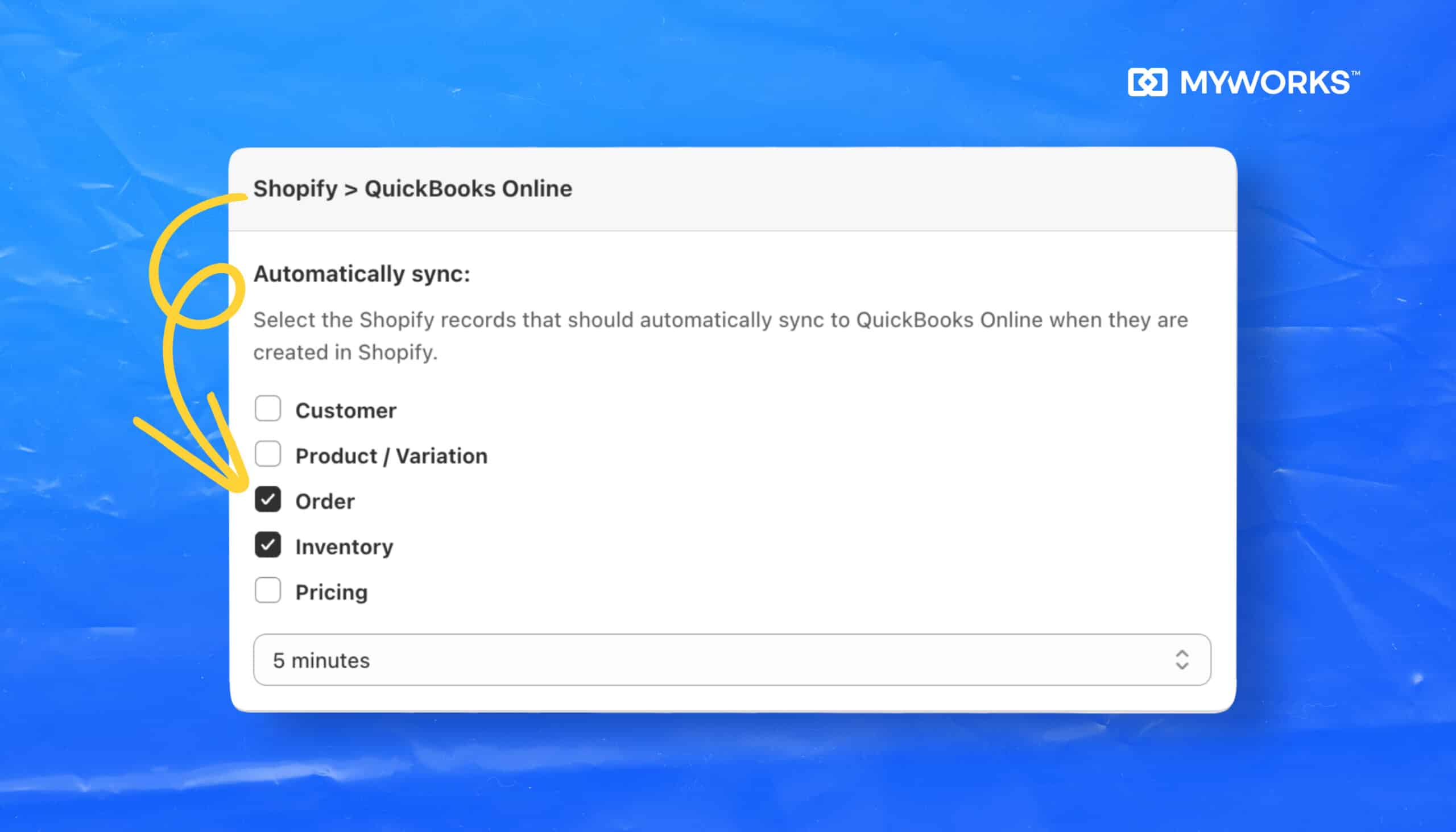
Step 4: Understand Your True Product Margins
Not all sales are profitable. A product with a $30 gross profit might be a loss once you account for:
- Payment processing fees.
- Return rates.
- Customer support time.
- Ad spend by channel.
Step 5: Build Scalable Customer Service and Fulfillment Systems
Start creating simple, efficient customer service processes while you’re still a small business. This way, it won’t overwhelm you later.
Set up:
- Automated email flows for shipping and refunds.
- Prebuilt response templates for common issues.
- Rules for handling backorders and returns.
Why Thin Margins Make Every Hour Count
Let’s examine the math behind a typical dropshipping transaction to understand why operational efficiency matters so much.
Consider a $50 product with a $20 wholesale cost:
Revenue: $50.00
- Product cost: $20.00.
- Shopify transaction fee (2.9%): $1.45.
- Payment processing (2.9%): $1.45.
- Customer acquisition (25%): $12.50.
- Net profit: $14.60 (29% margin).
With margins this thin, every hour spent on manual tasks represents money leaving your business. Companies lose 15-25% of revenue annually to operational inefficiencies, with manual data entry alone costing the average worker 1.5 hours weekly in lost productivity.
The hidden costs compound quickly:
- Manual order processing at 100 orders monthly = 8 hours weekly of administrative work.
- At $25 hourly value = $800 monthly in opportunity cost.
Thin margins don’t leave room for inefficiency. Every hour saved through automation goes straight to your bottom line.
The good news is that the global dropshipping market continues to expand rapidly. This proves your gut feeling: the opportunity is real, and companies that treat it like a real business operation will capture it.
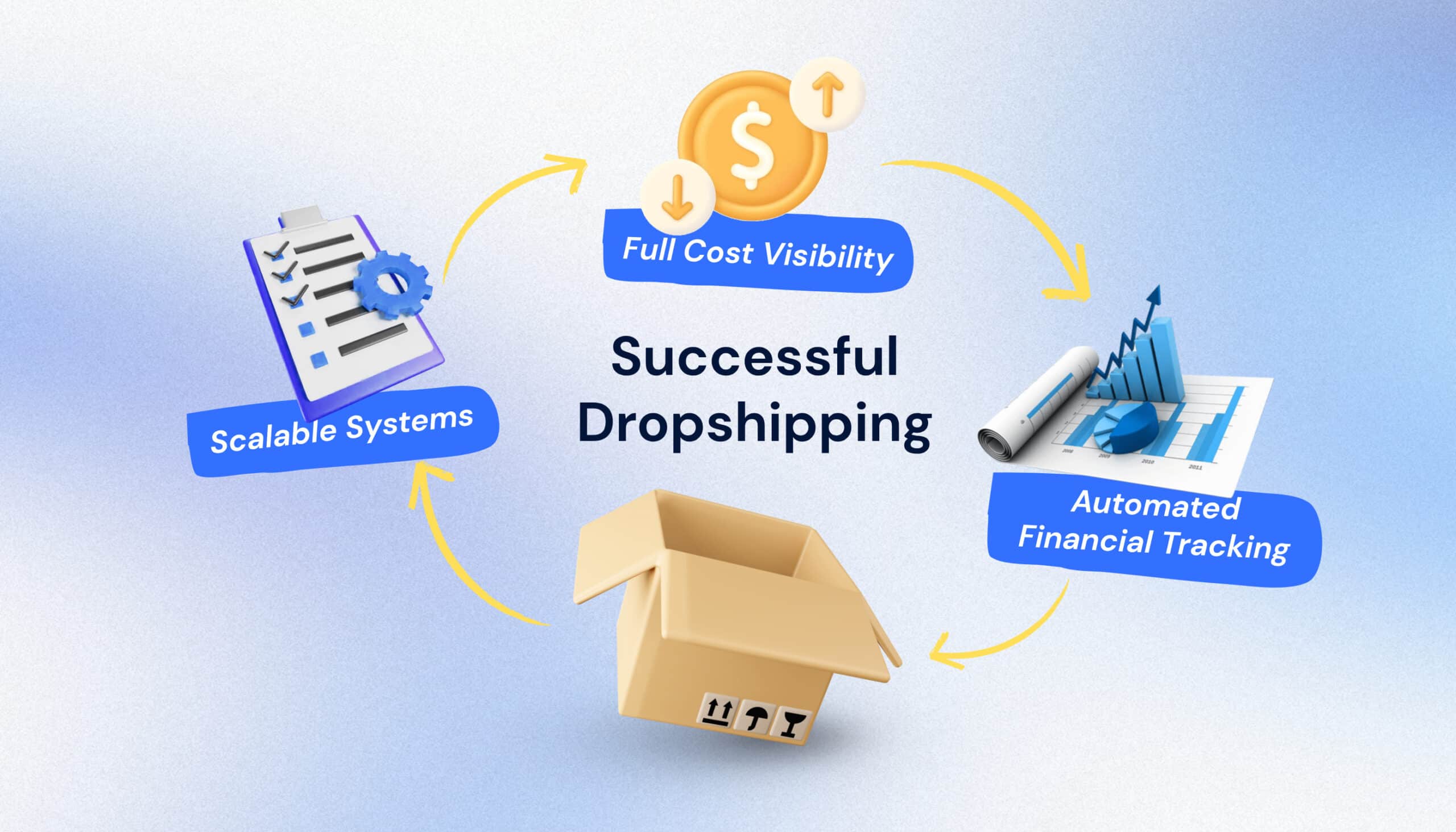
Three Operational Capabilities That Set Winners Apart
Dropshipping businesses that succeed don’t just sell better products; they operate better. Here’s what separates the most successful Shopify dropshippers from the rest:
1. Automated Financial Tracking
Tracking a single Shopify order requires recording the sale amount, product cost, platform fees, payment processing charges, supplier fees, shipping costs, and tax implications across potentially three different systems.
Manual bookkeeping doesn’t scale. That’s why professional dropshippers connect their Shopify store directly to accounting software like QuickBooks, ensuring every transaction flows automatically into their financial records.
Shopify’s complexity demands ecommerce-specific automation that can handle:
- Multi-channel accounting (e.g., Shopify + Amazon or Etsy).
- Variable supplier fees and shipping rates.
- Platform-specific tax rules that generic tools often mishandle.
When you know which products and suppliers generate real profits, you can optimize marketing budgets, negotiate better supplier terms, and scale what works.
2. Full Cost Visibility
Most dropshippers track revenue and assume they’re profitable. The successful ones track every cost and make decisions based on actual margins.
They account for all expenses: payment processing fees, software subscriptions, customer service time, and the true cost of customer acquisition across different marketing channels. Implementing effective cash flow management strategies becomes essential when margins demand precision.
Shopify dropshippers face unique cost complexities:
- App subscription fees that accumulate monthly.
- Transaction costs that vary by payment method.
- Supplier relationships requiring profit margin tracking across multiple channels simultaneously.
3. Systems That Scale With You
Customer service inquiries multiply faster than revenue grows because order volume increases complexity exponentially.
That’s why top sellers build automated order processing, streamlined customer service workflows, and systems that handle complexity automatically without requiring constant manual intervention.

Common Mistakes That Kill Profitability
Avoid these all-too-common pitfalls that drain your profits.
Focusing on Products Before Operations
Most new dropshippers spend weeks researching trending products, but ignore the operational foundations. That creates a business that can’t scale, no matter how good the product is.
Fix it: build automated workflows first, then test products with clean, accurate data.
Underestimating Hidden Costs
Platform fees, customer service time, return handling, subscription apps, and attribution gaps can quietly consume 30–40% of your gross revenue.
Fix it: factor every recurring cost into your pricing strategy from the start.
Delaying Professional Systems
Spreadsheet tracking collapses faster than most founders expect. By the time you’re manually reconciling dozens of orders a day, you’re already in the danger zone.
Fix it: integrate Shopify with proper ecommerce accounting software to gain real-time visibility and cleaner decision-making.
Understanding ecommerce accounting fundamentals enables better supplier negotiations, informed growth decisions, and planning capabilities that manual tracking cannot provide.
Build Your Foundation for Shopify Dropshipping Success With MyWorks
Dropshipping success requires operational discipline from day one. Entrepreneurs who build sustainable businesses understand that competitive advantages come from superior systems, not superior products.
Start by:
- Choosing the right business structure (LLC, S-Corp, etc.).
- Getting the tax setup right from the start.
- Investing in ecommerce-specific automation tools.
If you want to master selling on Shopify without inventory, start by investing in automated ecommerce solutions. MyWorks is built specifically for Shopify merchants who want to run lean, scalable businesses with inventory-free selling. It connects Shopify and QuickBooks to automate accounting, eliminate manual errors, and surface the insights you need to grow profitably.
See how MyWorks pricing scales with your business and unlocks real-time visibility into your Shopify store’s finances.
FAQs About Dropshipping Without Inventory
1. How can I start selling on Shopify without holding inventory?
You can sell on Shopify without inventory by using dropshipping apps like DSers and Spocket, connecting to reliable suppliers, and automating your order and inventory systems for efficiency.
2. How Much Does It Cost to Start Dropshipping on Shopify?
Startup costs are relatively low. Shopify plans range from $29–$79/month, plus any app subscriptions and ad spend.
3. Do I Need Accounting Software for Dropshipping?
Yes, thin margins and layered fees make manual tracking unsustainable. Ecommerce accounting software helps you understand which products make money and ensures accurate tax reporting for your growing business.
4. What’s the Biggest Challenge in Shopify Dropshipping?
Operations, not products or ads, are the biggest challenge. Without the right systems, tasks like order tracking, fee reconciliation, and bookkeeping quickly spiral out of control.
5. Can You Really Make Money Dropshipping Without Inventory?
Yes, but success requires treating it like a real business operation. Effective cash flow management and automated accounting become essential when profit margins demand precision. Stores that implement operational excellence early see sustainable growth, while those using manual processes typically struggle to scale profitably.
